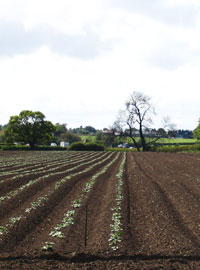Chitting could help spud producers hit targets

More potato growers should consider chitting seed before planting, SAC’s Yorkshire agronomist John Sarup said at the college’s Association of Potato Producers annual conference.
“Should there be a revival in chitting? The simple answer is ‘yes’. But only if you can do it properly,” he warned.
Chitting was the controlled production of sprouts on tubers pre-planting, sometimes known as physiological ageing, he explained.
Growers of earlies and late main crops could especially benefit from the practice.
Chitting allowed growers to manage stem numbers and planting densities and led to more rapid emergence and canopy cover, which increased light interception and potentially yields, he explained.
In turn earlier bulking led to earlier harvesting, usually in better conditions. “It means quicker harvesting, less damage, less waste and an early delivery period.”
For earlies that could help improve growers’ chances of hitting target markets for size and price. Late main-crop varieties benefited from earlier harvesting, but also from improved processing quality through more consistent maturity.
“You must be able to exploit that potential in your marketing, though,” he warned.
It was also vital to be able to chit properly, he stressed. “If you can’t do it properly, don’t attempt it.”
The key was maintaining control of sprout length and strength through close temperature, ventilation and light control.
Chitting cost around £75/t, he said. But McCain‘s trials comparing non-chitted and chitted Markies in 2005 and 2008 (pictured) found an increased return of £1200/ha at 2009 prices after taking account of the cost of chitting. “Most of that was from a 4-6t/acre yield increase, but also improvements in quality.”
Dickeya-infected potato seed may not be replanted in Scotland

